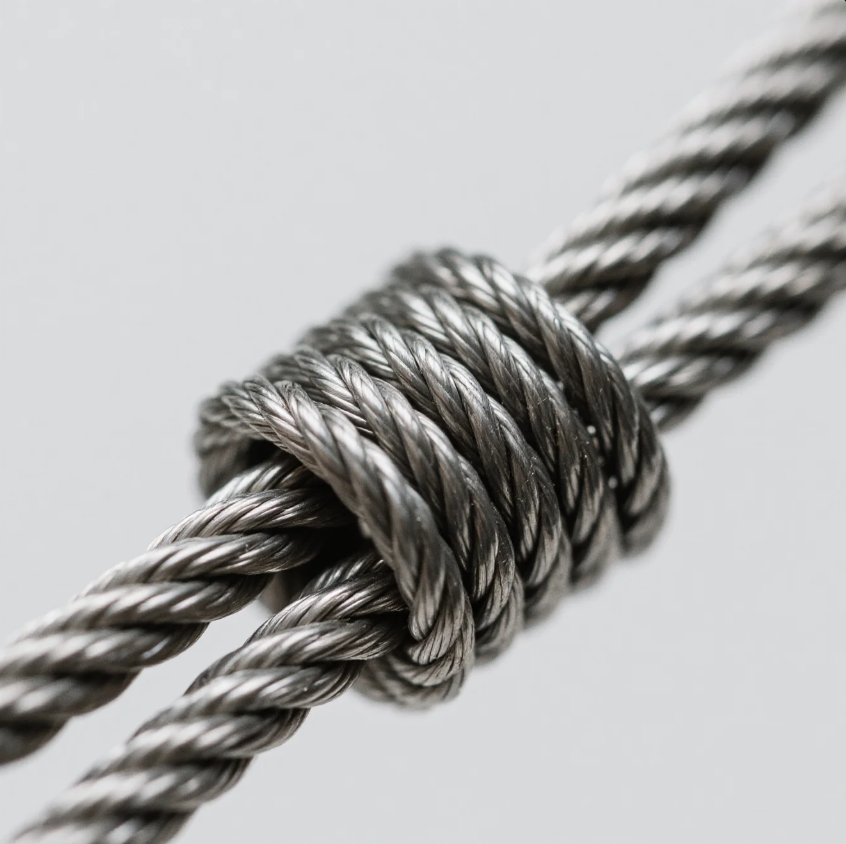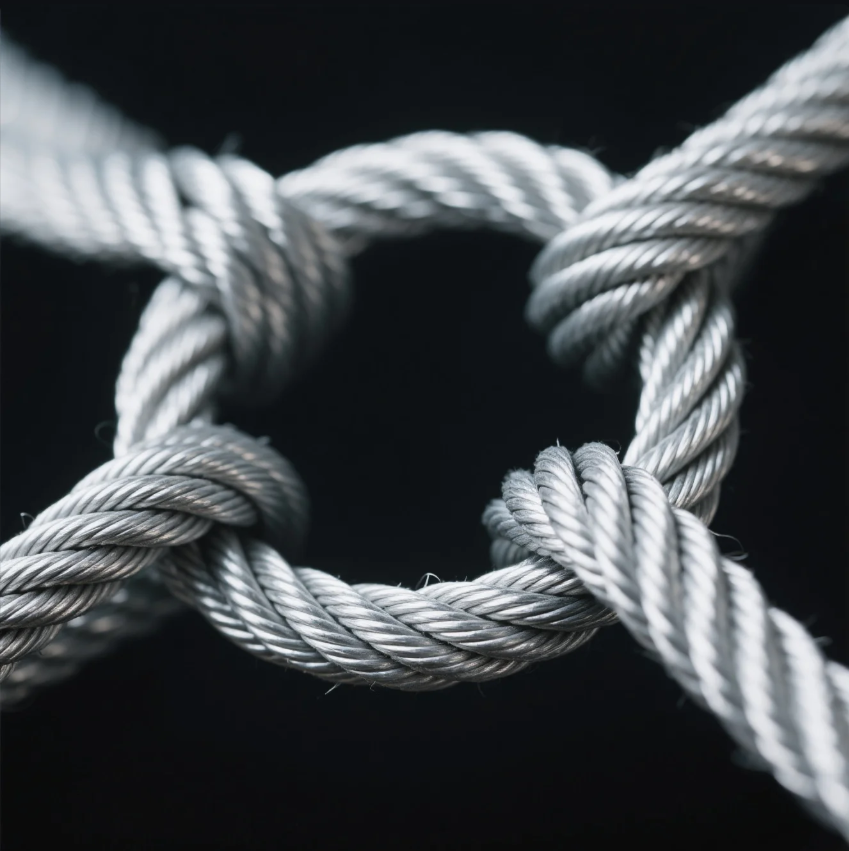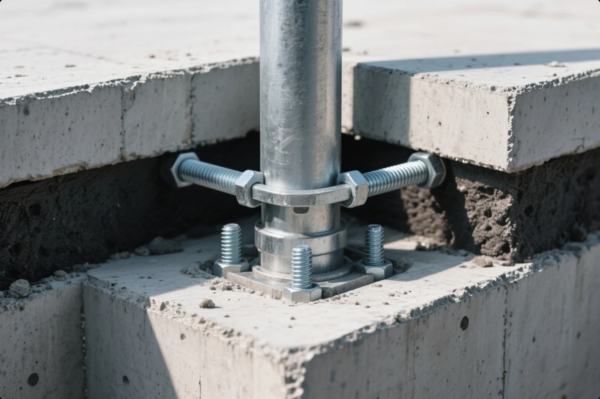What is squeezing the wire rope sleeves called?

The process of squeezing or compressing wire rope sleeves is known as crimping. Crimping ensures a secure connection between the wire rope and the sleeve, which is essential for maintaining the strength and integrity of the rope.
Crimping wire rope sleeves is a crucial step in creating reliable and strong wire rope connections. This article explores the key terms and techniques associated with crimping and wire rope sleeves.
In this article, we will delve into the differences between swaging and ferrules, how to crimp wire rope sleeves properly, and more.
What is the difference between swage and ferrule?
Swaging and ferrules are often associated with wire rope but are used in different contexts. Swaging refers to the process of compressing or forming metal, while ferrules are metal sleeves that are placed over the wire rope to secure it.
Snippet paragraph: Swaging is a process of compressing metal, while ferrules are metal sleeves used to secure wire rope. Both are essential in ensuring strong, reliable wire rope connections.

Dive-Deeper on Swaging and Ferrules
-
Swaging: Swaging is a mechanical process that involves applying pressure to a metal to shape or compress it. In wire rope applications, swaging is used to compress the metal sleeve (ferrule) around the rope, creating a permanent connection. This process is typically done using a hydraulic machine to apply even pressure to form the ferrule around the rope.
-
Ferrules: A ferrule is a cylindrical metal sleeve that fits over the end of the wire rope. The ferrule is crimped or swaged to secure the rope inside, creating a durable connection. Ferrules come in various sizes and materials, depending on the specific application and the strength required.
While swaging refers to the process of compressing, ferrules are the components that get compressed around the wire rope to create a secure and reliable connection.
How to crimp a wire rope sleeve?
Crimping a wire rope sleeve is a precise process that ensures the rope stays secure and doesn't unravel. The crimping process involves using a crimping tool to compress the sleeve tightly around the wire rope.
Snippet paragraph: Crimping a wire rope sleeve involves using a crimping tool to compress the sleeve around the rope, ensuring a strong and secure connection.

Dive-Deeper on Crimping a Wire Rope Sleeve
Follow these steps to crimp a wire rope sleeve correctly:
-
Select the Right Sleeve: Choose a wire rope sleeve that fits the diameter of the wire rope. The sleeve should be slightly larger than the rope to ensure a tight fit when crimped.
-
Insert the Wire Rope: Slide the wire rope into the sleeve, ensuring that the rope is fully inserted and that the ends of the rope are inside the sleeve.
-
Position the Sleeve: Position the sleeve in the crimping tool. Make sure that the sleeve is in the correct spot, with the rope properly aligned inside the sleeve.
-
Crimp the Sleeve: Use the crimping tool to compress the sleeve evenly around the wire rope. Apply sufficient pressure to secure the rope, but avoid over-crimping, which could damage the rope or sleeve.
-
Check the Connection: After crimping, check the connection by tugging on the rope to ensure that it is secure. The sleeve should hold the rope tightly without any slippage.
Crimping wire rope sleeves properly is essential to ensure that the connection is strong and reliable, preventing failure during use.
What is a wire rope grip?
A wire rope grip is a mechanical device used to secure the ends of a wire rope. It typically consists of two metal plates, a U-bolt, and nuts, and is used to clamp the rope tightly in place, preventing it from unraveling.
Snippet paragraph: A wire rope grip secures the ends of a wire rope using a U-bolt and nuts, ensuring a tight and reliable connection.

Dive-Deeper on Wire Rope Grips
Wire rope grips are typically used in applications where temporary or adjustable connections are needed. Here’s more about wire rope grips:
-
Components: A wire rope grip generally consists of two metal plates that are placed over the wire rope, with a U-bolt passing through them. The nuts on the U-bolt are tightened to secure the rope in place.
-
Uses: Wire rope grips are commonly used in lifting and rigging operations, where secure connections are needed to hold heavy loads. They are also used in applications where the rope may need to be adjusted or removed.
-
Adjustability: One of the key advantages of wire rope grips is that they can be adjusted, making them suitable for applications where the length of the wire rope may change or where a temporary connection is required.
Wire rope grips are easy to install and remove, making them an essential tool in applications requiring flexibility and convenience.
What are wire rope ferrules used for?
Wire rope ferrules are used to create secure loops at the end of wire ropes, prevent fraying, and provide a strong connection when the rope is attached to other components. They are essential in ensuring that the wire rope remains intact and performs reliably under load.
Snippet paragraph: Wire rope ferrules create secure loops and prevent fraying, ensuring a strong connection when attaching the rope to other components.

Dive-Deeper on Wire Rope Ferrules
Wire rope ferrules are widely used in a variety of industries, including construction, marine, and rigging. Here’s a deeper look at their uses:
-
Creating Secure Loops: Ferrules are often used to create permanent loops at the end of wire ropes, which can then be attached to hooks, pulleys, or other rigging components. This helps prevent the rope from unraveling and provides a secure connection.
-
Prevention of Fraying: When wire rope is cut, the strands of the rope can begin to fray, weakening the rope. Ferrules prevent this by encapsulating the ends of the wire rope, ensuring that the rope stays intact and performs as expected.
-
Strengthening the Connection: By securing the ends of the wire rope inside a ferrule and then crimping the ferrule, the overall strength of the connection is enhanced, ensuring that the rope can withstand high loads without failure.
Wire rope ferrules are essential for ensuring the safety, integrity, and durability of wire ropes in various applications.
Conclusion
Crimping wire rope sleeves is a vital process for ensuring secure connections. Understanding the differences between swaging and ferrules, how to crimp a sleeve properly, and the uses of wire rope grips and ferrules will help you make informed decisions for your wire rope needs.







